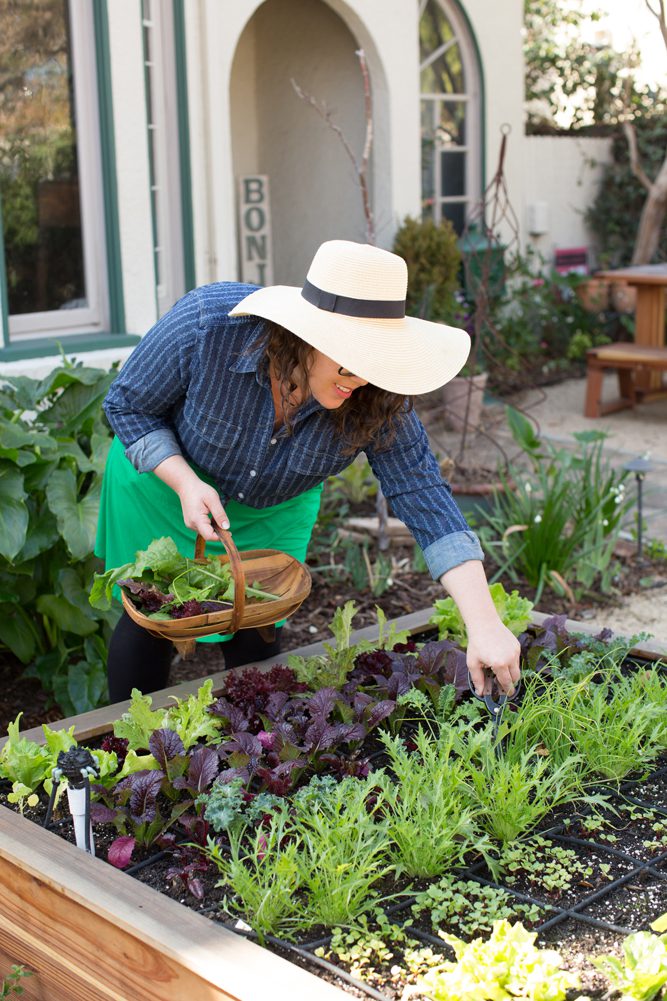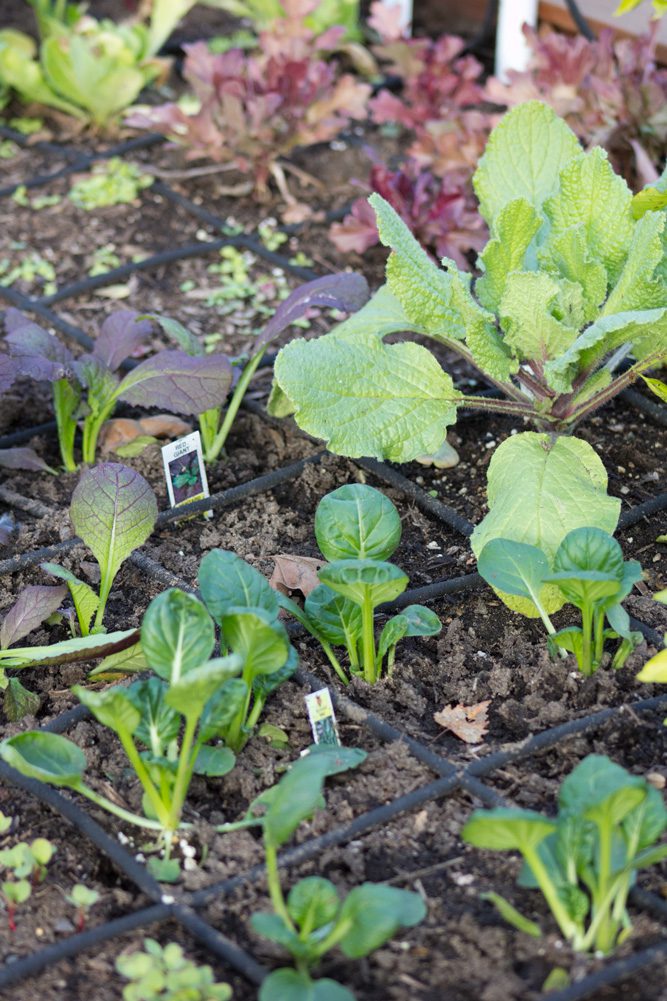
Embracing Autumn’s Abundance: Fall Vegetables for Your Garden
August 8
5 min read
0 Comments
Your Guide to Planting Delicious Fall Vegetables
The gentle transition from summer’s warmth to the crisp embrace of autumn marks the perfect time to breathe new life into your garden. As the leaves begin to change and the air grows cooler, your garden can still be a thriving haven of fresh produce. In this guide, we’ll take you on a journey through the world of fall vegetables, revealing the secrets to cultivating a bountiful autumn harvest that will make your taste buds dance with delight.
Fall Vegetables for Your Garden
The allure of fall vegetables lies in their remarkable ability to thrive in cooler temperatures, producing flavors that are often sweeter and richer than their summertime counterparts. As you embark on your fall gardening adventure, remember that planning is key to reaping the rewards. We can help you get ready for fall – schedule a consultation with our team today!
Did You Know? Fall vegetables benefit from the milder temperatures and increased moisture levels of autumn, resulting in vibrant and delectable crops.
Preparing Your Garden and Soil for Cooler Weather
Before you dive into planting, give your garden a little TLC. Clear away any spent summer plants and weeds to create a fresh canvas for your fall vegetables. Enhance your soil with compost, worm castings, and slow feeding organic plant food to provide the nourishment your new crops crave. Healthy soil equals healthy plants — a winning equation for a successful harvest.
Pro Tip: A layer of mulch not only conserves soil moisture but also helps regulate soil temperature, keeping your fall vegetables cozy as temperatures drop.
Top Picks for Fall: Your Vegetable Lineup
Autumn brings forth a colorful cast of vegetables that thrive in the cooler days and longer nights. Imagine the delight of harvesting crisp radishes, tender spinach, and vibrant Swiss chard right from your garden as the leaves turn golden.
Fun Fact: Many fall vegetables are “cold-tolerant,” meaning they can withstand light frosts without losing their flavor or nutritional value.

Sowing the Seeds of Success: Planting Techniques
When planting fall vegetables, timing is crucial. Aim to plant seeds or transplant seedlings about 6-8 weeks before the first expected frost in your area. This gives your crops ample time to establish themselves before winter’s chill arrives. In zone 10b, we often do not have a first expected frost date, which means succession sowing throughout the season provides additional harvests. Remember that while cool-season vegetables generally grow well in the fall, the specific timing and success can vary based on your location and micro climate.
Pro Tip: Extend your growing season by using row covers or cold frames to protect your fall vegetables from early frosts.

Cool-season Plants to Consider Growing this Fall
- Lettuce: Varieties like Romaine, Butterhead, and Spinach are well-suited for fall planting, producing tender and flavorful leaves.
- Kale: This nutritious leafy green is hardy and often tastes even better after a light frost.
- Broccoli: Cooler temperatures enhance the flavor of broccoli, making it a popular fall choice.
- Cauliflower: Similar to broccoli, cauliflower benefits from the cooler weather of fall for optimal growth.
- Carrots: Fall planting yields sweet and crunchy carrots that are a delight to harvest.
- Radishes: Quick to mature, radishes add a pop of color and flavor to your fall garden.
- Spinach: Cooler temperatures prevent spinach from bolting, resulting in lush leaves for your salads.
- Swiss Chard: With its vibrant stems and nutritious leaves, Swiss chard is a colorful addition to your fall garden.
- Cabbage: Whether red or green, cabbage can thrive when planted in late summer for a fall harvest.
- Turnips: Both the roots and greens of turnips can be enjoyed in various dishes.
- Peas: Certain pea varieties, such as snap peas and snow peas, can be sown in the fall for a tasty crop.
- Beets: Fall planting gives you sweet and earthy beets that are perfect for roasting or salads.
- Brussels Sprouts: These mini cabbages are a fall favorite, developing a rich flavor as the weather cools.
- Garlic: Planting garlic in the fall allows it to establish roots and yield larger bulbs the following year.
- Onions: Short-day onion varieties can be planted in the fall for an early summer harvest.
- Arugula: This peppery green thrives in cooler weather and adds a zesty kick to salads.
- Endive: Similar to lettuce, endive is a beautiful bitter green for fall salads and dishes.
- Cilantro: Fall planting prevents cilantro from bolting too quickly, extending your harvest.
- Parsnips: These sweet root vegetables can withstand frost and develop a deeper flavor when grown in cooler conditions.
- Mustard Greens: Spicy and nutritious, mustard greens are a flavorful choice for fall gardening.
Warding Off Unwanted Guests: Pest Management
As your garden thrives, it might attract some unwelcome visitors. Practice integrated pest management by encouraging natural predators, using physical barriers, and inspecting your plants regularly for signs of pests. Intensive companion planting can help mitigate pests from the cool-season garden. Row covers can also help deter the dreaded cabbage moth from laying eggs on your hard grown crops.
Fun Fact: Marigolds, calendula, nasturtiums, onions, and garlic are natural repellents that can help deter pests from invading your fall vegetable garden.
Harvesting the Fruits of Your Labor: Timing is Everything
The moment you’ve been waiting for has arrived—the harvest! Fall vegetables are at their peak flavor when they’re harvested at the right time. Be sure to read up on the specific harvest times for each crop to ensure you enjoy the freshest, most delicious produce.
Pro Tip: Use a sharp pair of garden scissors or shears to harvest your fall vegetables, minimizing damage to the plants.
Conclusion: A Cornucopia of Flavor Awaits
Your fall vegetable garden holds the promise of delectable dishes and a sense of accomplishment. As you revel in the beauty of autumn’s colors and flavors, remember that every seed you plant and every care you provide contribute to the symphony of the season.
If you’re just starting your gardening journey, fall is a great time to begin in Southern California. The weather is ideal for quick-growing crops that require less maintenance. If this is season to create the potager of your dreams, schedule a consultation with our expert team.


Frequently Asked Questions (FAQs):
- Can I plant fall vegetables in containers?
Absolutely! Many fall vegetables thrive in containers, making them a versatile choice for small spaces. Consider planting your own salad bowls or adding obelisks to pottery to maximize growing space. - How do I know when it’s time to harvest my fall vegetables?
Each vegetable has its own indicators of ripeness, such as color, size, or texture. Consult your seed packet or our garden experts for personalized guidance. - Are there any fall vegetables that require full sun?
Yes, vegetables like kale, lettuce, and radishes typically perform well in full sun during the fall season. - Can I grow fall vegetables if I live in a warmer climate?
Certainly! Milder winter climates are ideal for the cool-season garden providing a much longer growing season than other regions. - Can I plant fall vegetables alongside my existing plants?
Integrating vegetables into your landscape is a great use of space. Be sure to consider how the existing plants might shade or crowd out any fall vegetables as they grow.

Leave A Comment